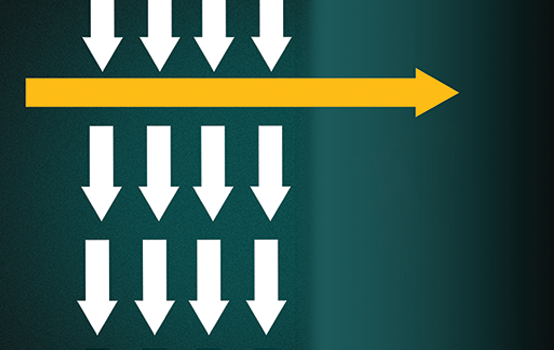
Poland’s once low-quality education system has emerged as an international leader, thanks to a comprehensive reform plan that left nothing unchanged.
Reforming Poland’s education system became a priority soon after the country’s political transition began in 1989. We had to start by removing lies from the school curriculum before we could begin reforming the entire education system.
Polish education underwent a major transformation, which is now getting a great deal of attention because of our dramatically improving scores on the Program of International Student Assessment (PISA). One writer has called Poland “an eastern European educational powerhouse” (Wittmeyer, 2013). In 2000, Poland ranked below average in all three subjects — math, reading, science — on PISA. By 2012, Poland was in the top 10 countries in science and reading and 13th in mathematics on the PISA.
Although the reforms began in 1999, many of the ideas came from an old Polish system developed by Janusz Jedrzejewicz in 1932. These reforms led to a revolution in the Polish education system when Poland became an independent country after World War I. Although the reforms were successful, the Communists who took over Poland in the 1950s destroyed the system. The reform of 1999 was actually a return to many of the ideas from the Jedrzejewicz era.
An educational reform in one country cannot be changed according to only one model.
When I was Poland’s education minister, we decided that we needed to reform virtually all of the essential elements of the school system. I led a small team that prepared the preliminary draft of the reform project that was published in the so-called Yellow Book. We presented a draft version of the reforms proposal in an open meeting of university rectors and school superintendents and then sent the plan to all schools, local governments, and teachers’ unions. After a yearlong nationwide debate, the Polish parliament adopted our final reform proposal in September 1999, and the new school system became a reality.
We set several goals for our national reforms:
- Improve the overall education level of Polish citizens. If we could ensure that our education program was more versatile and wide, we believed we could solve the problem of unemployment in Poland and help it become more flexible and competitive in a market economy. This is why we embarked on a comprehensive reform of an entire system from kindergarten to Ph.D. students.
- Equity. We wanted to improve education at the bottom of society. Children are never responsible for where they come from. If the parents are not well-educated and they are poor, it does not mean that their children have poor ability to learn. Most important for me was seeing that every child had an equal chance to learn. In Poland, we had big gaps between the poor and the rich and also between big cities and small towns.
- National standards and local autonomy. Poland needed to move to a system that ensured consistency throughout the country while also granting some flexibility to local governing authorities and some autonomy to local schools. Poland introduced nationwide exams for students at every level and a framework for school curricula. Schools could design their own curriculum as long as it was in line with the national core curriculum and kept in mind that all students took the same exams. Schools also selected their own books rather than having the central government prescribe which books would be used. These changes influenced more than the content of a child’s education; they changed the thinking about teaching and improved the professional culture of schools.
We used these objectives as we pursue these goals:
More time in core academics for all students. During the Communist era, students attended primary school for eight years and then took an exam at age 14 to determine whether they would continue in an academic or a vocational path. Students who were routed into vocational schools had no opportunity to enter higher education. Only about 20% of all students went on to an academically focused secondary education.
The 1999 reforms called for all students to attend six years of primary school followed by three more years of compulsory lower secondary education, known as gymnasium. Primary school is divided into two stages: The first stage (grades 1 to 3) offers integrated learning; the second stage (grades 4 to 6) in which subject teaching is provided. After primary school, all students are required to attend gymnasium — three years of general lower secondary education. There are no vocational studies at gymnasium in order to ensure that every child has a solid academic base in reading, mathematics, and science through their first nine years of schooling. This provided an extra year of academic study for every student, including those who might continue on to vocational training.
Poland also has increased its support for preschool education and further expanded the general curriculum in vocational schools. The result of all reforms mentioned was the extension of compulsory comprehensive education from eight years before the 1999 reform to a minimum of 10 years (including preschool) today.
Because more students spend more time on core academics, more students are prepared to go further in their education. The share of students entering colleges or universities in Poland has increased significantly. The effect of the school reforms translates into continuing education and better skills after leaving school.
A nationwide exam system. National exams are a crucial component of quality assurance and improvement. Standardized assessments are conducted at the end of each stage of education. Test results are published and carefully analyzed by schools.
An important element of the Polish reform was a new nationwide exam system. All of the students on the same level throughout the country now take an exam on the same day each year.
At the end of primary school, students take an external competence test (set by external examination commissions and assessed by examiners selected by these commissions). At the end of gymnasium, when they are 15 years old, all students take another exam that determines their eligibility for the four options for upper secondary school. Regardless which option students move into for upper secondary school, all students have the opportunity to take the Matura exam, which is the country’s school-leaving exam and a basic requirement for college entrance.
If we could ensure that our general education program was more versatile and wide, we believed we could solve the problem of unemployment in Poland and help it become more flexible and competitive in a market economy.
All of the results from the exams are available to students, teachers, and the public. Students have a special PIN code so they can check their own results, and schools have a unique PIN code to see the results of their students.
We believed that having such an exam would encourage teachers to care about how hard their schools and their students are working. Indeed, schools began to compete to see who could achieve the better results. The exams have boosted competition, and the competition has encouraged local governments to invest in education.
Changes in school governance. During the Communist era, the central government managed all schools in the country. The Minister of Education still has overall responsibility for schools — identifying the hours that students must be in school, standards and curricular frameworks, and school inspections and performance ratings — but local government authorities manage schools, which charge no tuition. Most public expenditures on education come from grants to local authorities from the national government.
We also created a uniform system of allocating funds to schools based on their number of pupils and adjusted through a system of 21 weightings (e.g. rural areas, small towns, specific educational tasks, such as vocational training, sports, schools, etc.).
Local governments receive money from the central budget, but they make decisions locally about how to spend that money. If, for example, the local government authorities decided that the most important thing was to build a road between two villages, they could use money intended for education to build that road. However, it can and often does work another way around: The local government authority decides to invest in the education system from its own income.
Smaller differences between schools. Poland also limited the differences between schools attended by 15-year-olds, which used to be among the largest across OECD countries and are now among the smallest. At the end of gymnasium, all students take a national exam, which distributes students among three types of schools:
- Three-year general secondary schools that prepare students to take the Matura exam, which is required to undertake university studies;
- Four-year vocational secondary schools that allow students to earn a vocational qualifications diploma after passing an exam and to take the Matura exam as well; and
- Two-year or three-year basic vocational schools that award diplomas confirming vocational qualifications upon passing of an exam. Students can continue education in a two-year supplementary secondary school or in a three-year supplementary vocational secondary.
On passing the Matura, students may continue their education at a college or university. Depending on its type, field of study, and the duration of study, students aspire for the licentiate-bachelor’s degree (usually three years of study) or a master’s degree (five to six years of study). On graduation, master’s degree recipients may begin doctoral or postgraduate studies.
Because more students spend more time on core academics, more students are prepared to go further in their education.
Communication about the changes. In order to inform society, we prepared a series of more than 50 booklets, one for each problem (e.g. the changes of the kindergartens, the financial system, the responsibility of local government, etc.) Copies of the booklets were sent to all schools so teachers could be well-informed about the new system.
Adapting to the United States?
The education reforms in Poland were designed to consider Polish social and cultural conditions. In my opinion, it is difficult if not impossible to copy a reform like this from one country to another. Each country has its own historical and political experience and its own tradition and culture.
An educational reform in one country cannot be changed according to only one model. We tried to concentrate the history of the Polish educational systems and took the Jedrzejewicz-reform as an example.
Another country could adapt parts of the reforms, but taking the entire Polish reform and simply introducing the same in another country would be nonsense. Another country might consider our exam system or perhaps our local government-focused school funding system. But I believe it is very important to understand that all elements of education system are connected with each other. Comprehensive reform, rather than implementation of isolated, specific solutions, made the most sense for Poland and perhaps might be the best approach for other nations as well.
But such changes need time to show results. Unlike business and economics where a rule change can make the market react within a few months, weeks, or even days, education requires 10 or 12 years before one can see the system’s effectiveness.
Reference
Wittmeyer, A.P.Q. (2013, December 4). How Poland became an eastern European education powerhouse. Foreign Policy. http://foreignpolicy.com/2013/12/04/how-poland-became-an-eastern-european-education-powerhouse/
Citation: Handke, M. (2015). Poland: Changing the whole system at once. Phi Delta Kappan, 97 (3), 34-37.
ABOUT THE AUTHOR

Miroslaw Handke
MIROSŁAW HANDKE was minister of national education for the Republic of Poland from 1997 to 2000. He is now a professor of chemistry at AGH University of Science and Technology, Kraków-Poland.










